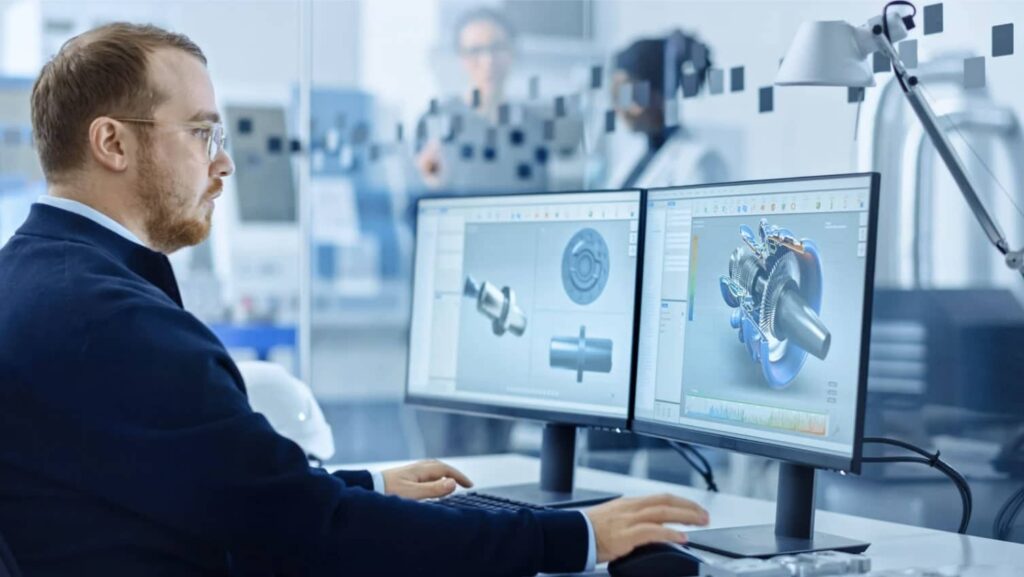Generative AI models, such as ChatGPT, Scribe, Jasper, Dall-E2 and others, have disrupted the way of work. Product design is one domain where the technology has found early adoption.
Traditional product design involves a linear ideation, conceptualisation, prototyping, testing, and production process. A typical design project begins with the creative team brainstorming ideas. They zero in on a concept based on the company objectives, user feedback, and other relevant considerations. Next, they create prototypes and iterations to fine-tune the design until they reach a satisfactory result. When done manually, such a process is resource-intensive, slow, and prone to human biases. Each iteration demands considerable human creativity, skill, effort, time and money. Teams can achieve only a handful of iterations within time and money constraints.
Generative AI betters the creative output and makes each stage faster and better.
1. Idea generation and conceptualisation
Generative AI models automate the task of generating design ideas. The design team can explore the wide range of ideas offered by the generative AI model and add their creative inputs to the AI-generated models.
Generative AI:
- Enables a comprehensive understanding of user preferences and feedback. Brands gather insights from review pages, social listening campaigns, and other channels. Such insights allow the creation of designs based on user preferences and general trends. But the task is often left incomplete due to time pressure and limited resources. Generative AI models process and analyse the data points and complete the task in minutes. These models enable creative insights based on comprehensive user feedback and insights.
- Encompass ideas that human designers cannot conceive in form and function. Generative AI algorithms explore a larger universe of possible solutions than a human brain can conceive. The algorithms generate thousands of simulations and throw up designs with the needed attributes. These algorithms make associations among remote concepts and generate design ideas from them.
- Adds predictive analysis capabilities to idea generation and conceptualisation process. The model analyses market trends, customer feedback, and other data sources to create popular product designs. Designers can use such insights to prioritise their design efforts.
2. Overcoming expertise bias
One underrated utility of applying generative AI in the design process is the reduction of human bias.
Designers often bring their preferences and cultural biases into the creative process. Generative AI produces designs that overcome such preconceptions and biases.
In the traditional design approach, designers decide on the functions upfront. They design the form to accommodate the functions.
Human-generated designs tend to suffer from bias, such as:
- Design fixation, or an overreliance on standard design forms.
- Functional fixedness, or limitations in imaging powers.
- The designer’s experiences and exposure. Their background may constrain them from considering new ways or approaches.
- Inherent personal preferences for colour and aesthetics.
Generative AI, trained on vast and diverse datasets, offers output free of such inclinations. Designs become free of bias and more inclusive and cater to a wide range of user backgrounds and needs.
Consider a design team tasked with designing a furniture line. The team inputs the parameter “modern, eco-friendly, and space-saving sofas” into the generative AI model. The model scours the market trends, user feedback on similar products, and available materials. It generates designs considering these factors. When human designers do the same job, the human brain’s exposure and inherent biases limit the scope of creative output.
The caveat is bias-free training models. If there is bias in the training data, the models amplify the bias.

3. Easy prototyping and iteration
Smart designers use generative AI models to create mockups and prototypes and build on these models within seconds. Generative AI tools take over the hard grind of prototyping. Human designers can focus on more critical product design and functionality aspects.
Generative AI:
- Automates the time-intensive task of generating design variations to facilitate A/B testing. Designers can explore various options and select the most promising ones without wasting time.
- Facilitate cross-disciplinary collaboration. The generative AI platform offers a common ground for designers, engineers, marketers, and other teams. They can share ideas and offer feedback on design concepts. The engineering team may upload an AI-generated 3D product concept model to assess the design feasibility. Marketers can use the same model to create and test promotional materials.
Generative AI has reduced development time by 30% to 50% in many industries. Fast concept generation, rapid prototyping, and quicker design iterations allow product development teams to respond to market demands in double-quick time. Fast time-to-market is especially valuable for products with short product lifecycles. Getting a product to market ahead of competitors may also offer huge first-mover advantages.
4. Super-optimisation
One of the most common uses of generative design algorithms today is to optimise structures.
Generative AI models analyse existing designs and suggest potential improvements. Designers leverage the deep learning capability of generative AI models to try out modifications that enhance functionality and aesthetics and make the end product more cost-effective.
Generative AI can create parts that deliver maximum strength with minimum material. The optimisation delivered by generative AI reduces product weight substantially. The direct benefit includes lower material costs. Generative AI reduces parts costs by anywhere between 6% and 20% in the automotive, aerospace and sporting goods industries. The indirect benefits, such as better product handling capabilities, deliver further profits.
In automobile design, generative AI optimises the shape and materials of the vehicle body. It improves aerodynamics and fuel efficiency without compromising safety standards.
Applying generative AI to power tool design improves ergonomics. A power-tool manufacturer reduced the weight of a die-cast support bracket by 26% and cost by 8%. They realised such benefits without compromising the structure’s strength.
Designers also put generative AI to use to make their designs environment-friendly. The model suggests materials and manufacturing processes with lower environmental impacts.
5. Customisation and personalisation
One of the biggest uses of generative AI in design is to facilitate personalisation and customisation.
AI models generate designs tailored to individual preferences. Doing the same manually is time-consuming and resource-intensive, to the point of being commercially unviable. Many popular brands offer generic designs on a take-it-or-leave-it basis simply because they do not have the time or resources to facilitate customisation or personalisation. Generative AI removes such roadblocks, making it viable for brands to offer customers products that match their unique tastes and requirements.
Consider the fashion industry. Generative AI can generate personalised clothing designs based on a customer’s body measurements, style preferences, and colour choices. Brands improve customer satisfaction and brand loyalty this way.
The future holds much more exciting prospects. Emerging trends indicate greater involvement for users in product design. Users could, for instance, use self-service tools to design their items or vote to produce a popular option.
Enterprises that deploy AI can unlock the potential of their human workforce. An AI-empowered workforce becomes more productive and efficient. They get more time and energy to innovate. Likewise, customers also benefit through faster time-to-market and lower costs.
Conclusion
Generative AI is already a part of the design process. As the technology evolves and matures, it will further revolutionise product conceptualisation and design. Cutting-edge generative AI tools such as Abode Firefly co-opt the latest AI innovations and assist human designers in creating hitherto unimaginable solutions. These tools empower any user, even someone with novice design skills, to conceptualise and generate advanced designs using just text prompts.
Abode Firefly users have already generated three billion-plus images since its beta launch in March 2023. The latest Adobe Firefly Image 2 Model offers far more advanced image generation, creator control and image quality capabilities.












